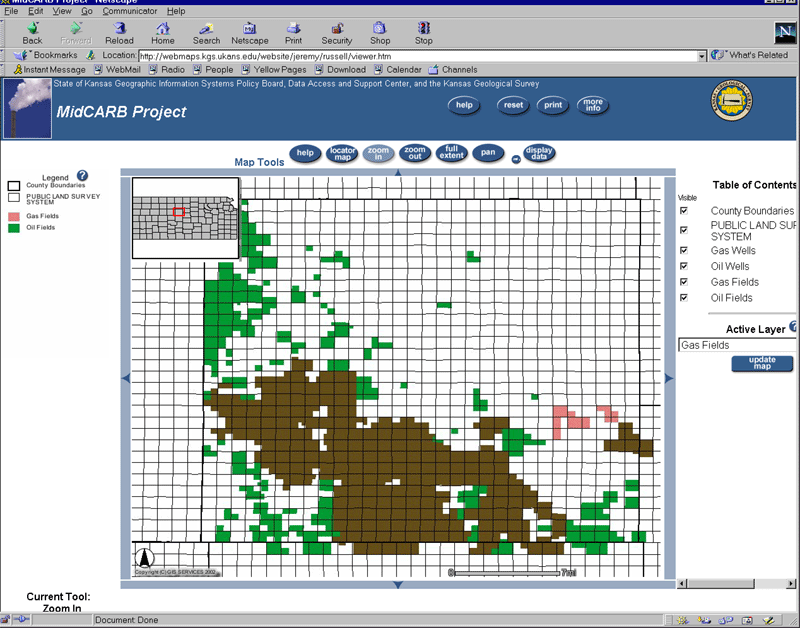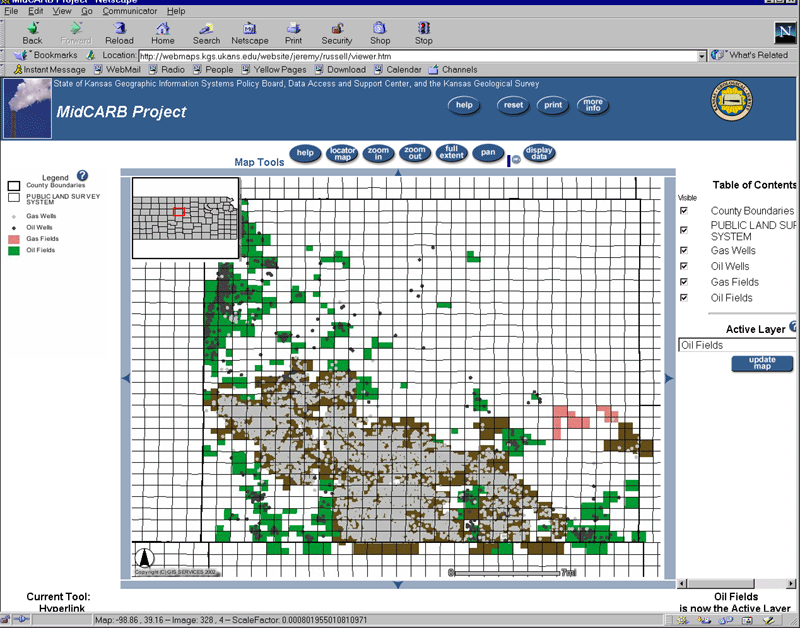
Midcontinent Interactive Digital Carbon Atlas and
Relational Database (MIDCARB)
Kansas Geological Survey
Open-file Report 2002-7

|
|
Kansas Geological Survey Open-file Report 2002-7 |
Producing oil reservoirs offer some of the most attractive targets for CO2 sequestration. However, they need to be evaluated from a technical perspective and in relation to available anthropogenic sources of CO2. To evaluate the feasibility of CO2 miscible and immiscible flooding of oil reservoirs, a database of reservoir fluid and rock properties is being compiled for representative reservoirs. Critical technical variables include oil gravity, viscosity, minimum miscibility pressures (MMP), reservoir structure, depth, net pay thickness, porosity, permeability, irreducible water saturation, residual oil saturation after waterflood, relative fracture and matrix properties, and potential well-injection rates.
Data are available and being assembled in various databases from each of the five states in the MIDCARB consortium. As an example, technical data is being assembled in the MIDCARB geospatial databases for the assessment of CO2 miscible flooding in Kansas reservoirs. A pilot site is being evaluated for appropriate tests to prove the CO2 flooding process and economics of using an industrial source. Based on initial screening, application of CO2-miscible flood technology and linkage to industrial sources (ethanol plant) is technically feasible in Lansing-Kansas City reservoirs in central Kansas. Similar data will be required for reservoirs throughout the MIDCARB area.
Data can be queried directly from relational database management systems and displayed. Queries can be designed to identify prospective wells for CO2 injection within a specified radius of the CO2 source.


|
|
e-mail : webadmin@kgs.ku.edu
Last updated March 2002
http://www.kgs.ku.edu/PRS/Poster/2002/2002-7/P3-01.html